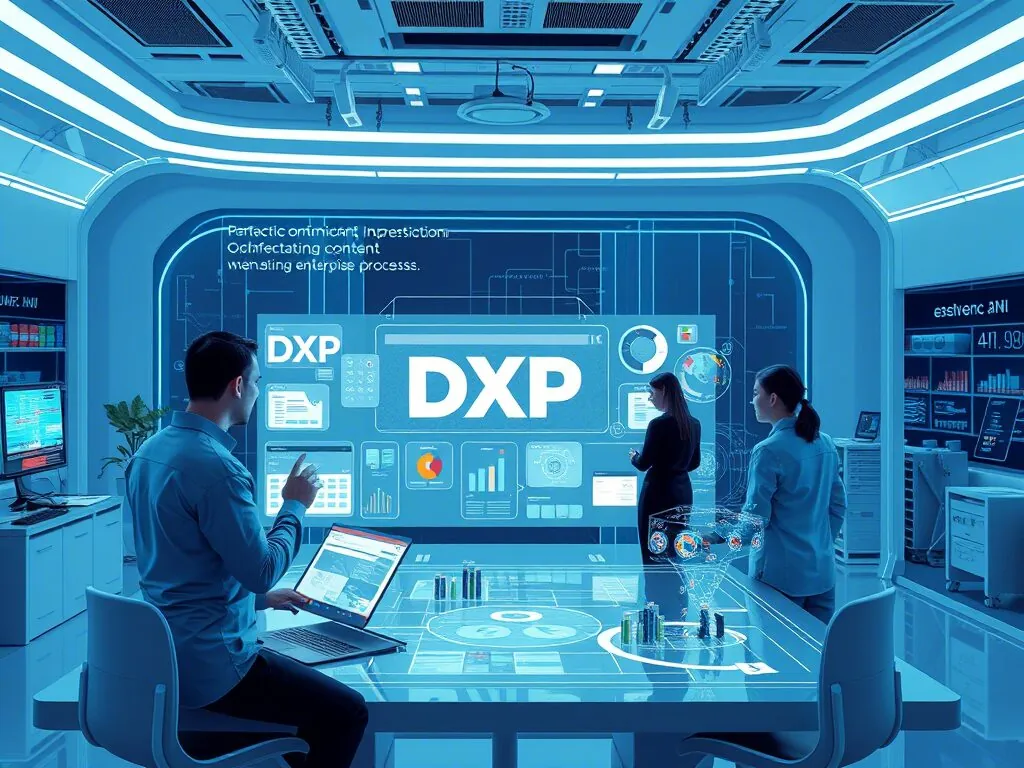AI marketing strategy isn’t just a buzzword; it’s a game-changer.
Want to boost your marketing efforts with data-backed AI techniques? This blog will guide you through creating an effective AI marketing strategy. From identifying goals to choosing the right tools, we’ve got you covered.
Let’s dive in.
How to Create an Effective AI Marketing Strategy
1. Step: Identify Goals and Objectives
- Define Clear Marketing Goals
Start by defining what you want to achieve with your AI marketing strategy. This could be increasing sales, improving customer engagement, or boosting brand awareness. Be specific. For instance, aim to increase online sales by 20% in the next quarter, as seen in successful strategies like Amazon’s use of AI for personalized product recommendations.
- Align AI Tools with Business Objectives
Once you have your goals, align them with your business objectives. If your aim is to boost sales, look for AI tools that can enhance lead generation and conversion rates. Matching tools to your objectives ensures that your investment in AI is justified.
- Set Measurable KPIs
Key Performance Indicators (KPIs) are metrics that help measure your progress towards your goals. Set KPIs that are specific, measurable, achievable, relevant, and time-bound (SMART). For example, track metrics like click-through rates, conversion rates, and customer lifetime value.
2. Step: Choose the Right AI Marketing Tools
- Evaluate the Best AI Tools for Your Needs
Research and evaluate AI tools that fit your marketing needs. Look for tools that offer features like predictive analytics, customer segmentation, and personalized recommendations. This research phase is crucial for finding the best match.
- Consider Cost, Scalability, and Ease of Use
Balance cost, scalability, and ease of use. Choose tools that fit your budget but can also scale as your business grows. Ensure the tools are user-friendly, so your team can adapt quickly.
- Look for Tools with Strong Analytics Capabilities
Analytics are the backbone of AI marketing. Choose tools that offer robust analytics features. These tools should help you understand customer behavior, predict trends, and measure campaign effectiveness.
3. Step: Integrate AI into Existing Systems
- Ensure Compatibility with Current Software
Before adopting new AI tools, ensure they are compatible with your existing software. This avoids disruptions and makes integration smoother. Check the technical requirements and consult with your IT team.
- Plan for a Seamless Transition
A well-planned transition minimizes disruptions. Create a detailed plan that outlines the steps for integration. Assign roles and set deadlines. This ensures everyone knows their responsibilities and the timeline.
- Train Your Team to Use New AI Tools
Training is vital. Organize training sessions to help your team understand and use the new AI tools effectively. Provide resources like user manuals and video tutorials. Continuous training ensures your team stays updated with any new features.
4. Step: Monitor and Optimize
- Continuously Track Performance Metrics
After implementation, continuously track your KPIs. Use dashboards and reports to monitor real-time performance. This helps you understand what’s working and what needs improvement.
- Adjust Strategies Based on Data Insights
Data-driven decisions are key. Regularly analyze the data and adjust your strategies accordingly. If a campaign isn’t performing, tweak it based on insights. For example, if email open rates are low, experiment with different subject lines.
- Keep Up with AI Technology Updates
AI technology is constantly evolving. Stay updated with the latest advancements. Subscribe to industry newsletters, attend webinars, and participate in forums. This helps you leverage new features and stay competitive.
- How to Use AI to Create Marketing Campaigns
AI can help create effective marketing campaigns. Use AI to analyze customer data, segment audiences, and personalize content. For example, AI can predict which products a customer is likely to buy based on their browsing history. This allows you to tailor your marketing messages.
- How AI is Used in Marketing with Examples
AI is used in various marketing aspects. Chatbots can handle customer inquiries 24/7, improving customer service. Predictive analytics can forecast sales trends, helping in inventory management. Personalized recommendations can enhance customer experiences, increasing sales. For instance, companies like Adobe regularly train their staff on AI and machine learning platforms to ensure effective use of these tools.
Top AI Marketing Tools to Boost Your Strategy
1. AI-Powered Content Creation Tools
AI-powered content creation tools like Jasper and Copy.ai are game changers for marketing teams. They automate the writing process, whether it’s for blog articles, social media posts, or even ad copy. Jasper uses advanced algorithms to generate high-quality content that mimics human writing styles. Copy.ai, on the other hand, specializes in short-form content, making it ideal for social media posts and email marketing.
- Jasper
Jasper offers a range of features designed to streamline your content creation. It can generate long-form articles, complete with SEO optimization. It even provides suggestions for headlines and meta descriptions. Studies show that automated content tools like Jasper can save up to 50% of the time you’d spend on writing tasks.
- Copy.ai
Copy.ai excels in generating short, catchy content. It’s useful for creating social media posts, email subject lines, and ad copy. The tool uses machine learning to adapt to your brand’s voice. According to users, Copy.ai improves productivity by allowing marketers to focus on strategy rather than drafting content.
2. AI-Driven Customer Insights Tools
Understanding your customers is crucial for effective marketing. Tools like Google Analytics and Kissmetrics provide valuable insights into customer behavior. These tools help you understand how customers interact with your website, what content they engage with, and where they drop off.
- Google Analytics
Google Analytics is a staple for any marketer. It offers real-time data on user behavior, traffic sources, and conversion rates. You can segment your audience based on various criteria like demographics, behavior, and technology. This allows for more personalized marketing campaigns. Google Analytics also integrates well with other Google products, making it a versatile tool.
- Kissmetrics
Kissmetrics goes a step further by focusing on individual user behavior. It tracks user interactions across multiple sessions, giving you a complete picture of the customer journey. This tool is particularly useful for SaaS companies and e-commerce businesses. Kissmetrics also offers A/B testing features, enabling you to optimize your marketing strategies based on data-driven insights.
3. AI-Powered Ad Platforms
Ad platforms like Facebook Ads and Google Ads are leveraging AI to optimize ad spend and improve targeting. These platforms use machine learning algorithms to analyze user behavior and predict the best times to show ads, the most effective formats, and the highest-converting audiences.
- Facebook Ads
Facebook Ads uses AI to optimize ad delivery. The platform’s algorithm learns over time, improving its targeting accuracy. It can segment audiences based on a variety of factors, including behavior, interests, and demographics. This level of targeting helps increase conversion rates while reducing ad spend. Studies indicate that businesses using AI-powered ad platforms see a 30% increase in ROI.
- Google Ads
Google Ads also leverages AI to enhance campaign performance. The platform’s Smart Bidding feature uses machine learning to optimize bids in real-time. This ensures that your ads are shown to users who are most likely to convert. Google Ads also offers features like responsive search ads, which automatically test different headlines and descriptions to see which combinations perform best.
4. AI-Enhanced Email Marketing Tools
Email marketing remains a powerful channel for reaching customers. AI tools like Mailchimp and HubSpot are making email campaigns more effective by personalizing content, optimizing send times, and analyzing engagement metrics.
- Mailchimp
Mailchimp uses AI to personalize email content based on user behavior and preferences. The platform’s predictive analytics feature can forecast customer lifetime value and recommend products. This helps in creating targeted email campaigns that drive higher engagement and conversions. Mailchimp’s AI algorithms also optimize send times to ensure that emails are delivered when recipients are most likely to open them.
- HubSpot
HubSpot integrates AI in its email marketing tools to enhance personalization and automation. The platform’s machine learning models analyze past email engagement to predict future behavior. This allows for more personalized email content and better segmentation. HubSpot also offers A/B testing features, enabling marketers to optimize their email campaigns based on data-driven insights.
AI-Based Social Media Management Tools
Managing social media can be time-consuming. AI tools like Hootsuite and Buffer are simplifying this process by automating scheduling, analyzing engagement, and even suggesting content.
- Hootsuite
Hootsuite uses AI to schedule posts at optimal times, analyze social media performance, and suggest content based on trending topics. The platform’s analytics feature provides insights into audience engagement, helping you refine your social media strategy. Hootsuite also integrates with various social media platforms, making it a versatile tool for managing multiple accounts.
- Buffer
Buffer offers similar features but focuses more on content scheduling and analysis. The platform uses machine learning to determine the best times to post, based on historical engagement data. Buffer’s analytics feature provides detailed reports on post performance, audience demographics, and engagement metrics. This helps marketers understand what types of content resonate most with their audience.
(Also Read: How AI is Driving Marketing Automation)
Data-Driven Marketing Strategies Enhanced by AI
1. Personalization at Scale
AI allows for the delivery of personalized content to each customer. This can be done by analyzing data from user interactions, purchase history, and even social media behavior. Personalization can include customized product recommendations, personalized email campaigns, and dynamic website content. According to a study by Epsilon, 80% of consumers are more likely to purchase from a brand that offers personalized experiences.
- Segment Audience Based on Behavior
AI can segment audiences into smaller, more specific groups based on behavior. For instance, machine learning algorithms can categorize users who frequently visit certain pages or abandon carts. This segmentation enables marketers to create targeted campaigns that resonate with each group. A book that delves deeply into this topic is “Predictive Analytics: The Power to Predict Who Will Click, Buy, Lie, or Die” by Eric Siegel.
- Increase Engagement and Conversion
Personalized content drives higher engagement and conversion rates. By delivering the right message to the right person at the right time, businesses can significantly improve their marketing ROI. A case study from Dynamic Yield showed that personalized experiences led to a 10% increase in conversion rates for a major retailer.
2. Predictive Analytics for Better Decisions
Predictive analytics involves using historical data to predict future outcomes. AI tools can analyze vast amounts of data to identify patterns and trends that would be impossible for humans to detect. This enables businesses to make better decisions based on data-driven insights.
- Analyze Past Data to Predict Future Trends
By analyzing past customer behavior, AI can predict future trends. For example, it can forecast which products are likely to be popular during certain seasons or events. This allows businesses to stock up on inventory accordingly. A notable reference on this topic is “Data Science for Business: What You Need to Know about Data Mining and Data-Analytic Thinking” by Foster Provost and Tom Fawcett.
- Focus on High-Value Customers
AI can help identify high-value customers by analyzing their purchasing behavior and engagement with the brand. This enables businesses to allocate more resources to retaining these customers. According to a report by McKinsey, companies that leverage customer behavioral insights outperform peers by 85% in sales growth.
- Allocate Resources More Effectively
Predictive analytics can also help in resource allocation. By predicting which marketing channels will yield the best ROI, businesses can allocate their budget more effectively.
3. Real-time Performance Monitoring
AI tools enable real-time performance monitoring, allowing businesses to make quick adjustments to their marketing campaigns. This can lead to improved ROI and more effective marketing strategies.
- Tools for Real-time Data Analysis
There are numerous tools available for real-time data analysis, such as Google Analytics and Adobe Analytics. These tools allow businesses to track the performance of their campaigns in real-time and make necessary adjustments. For a deeper understanding, check out “Competing on Analytics: Updated, with a New Introduction: The New Science of Winning” by Thomas H. Davenport and Jeanne G. Harris.
- Make Quick Adjustments to Campaigns
Real-time monitoring enables businesses to make quick adjustments to their campaigns based on current performance data. This can include changing ad creatives, adjusting budgets, or targeting different audience segments.
- Improve ROI with Timely Insights
By leveraging real-time data, businesses can improve their ROI. For example, if a campaign isn’t performing well, immediate adjustments can be made to optimize performance. A study by Forrester found that companies using real-time data saw a 10-20% increase in marketing ROI.
Utilizing AI in Digital Marketing for Better Outcomes
1. Chatbots and Virtual Assistants
Chatbots and virtual assistants are revolutionizing customer service. These tools provide 24/7 support, which means customers can get help anytime they need it. This constant availability increases customer satisfaction. According to a study by Oracle, 80% of businesses are already using or plan to use chatbots by 2025.
- Enhancing Customer Service
Chatbots can handle basic inquiries, freeing up human agents to tackle more complex issues. This leads to faster response times and more efficient customer service processes. Companies like H&M and Sephora use chatbots to help customers find products and answer questions.
- Providing 24/7 Support
The advantage of having a virtual assistant available around the clock is clear. Customers no longer have to wait for business hours to resolve their issues. This level of service can enhance a company’s reputation and lead to increased customer loyalty.
2. Programmatic Advertising
Programmatic advertising automates the process of buying ads. This technology uses AI to target specific audiences, increasing the efficiency of ad spending. According to eMarketer, programmatic ad spending will reach $100 billion by 2025.
- Automating Ad Buying
AI can analyze data from various sources to determine the best times and platforms to display ads. This reduces the need for manual intervention and makes the ad-buying process more efficient. Platforms like Google Ads and Facebook Ads Manager use programmatic advertising to optimize ad placements.
- Targeting Specific Audiences
AI can identify patterns in consumer behavior, allowing marketers to target specific demographics with tailored ads. This increases the likelihood of conversion and reduces wasted ad spend. Companies like Amazon and Netflix use AI to recommend products and content to users, enhancing their overall experience.
3. Email Marketing Optimization
AI tools can personalize email content based on user behavior and preferences. This leads to higher open and click-through rates. According to Statista, personalized emails can generate six times higher transaction rates than non-personalized ones.
- Personalizing Email Content
AI can analyze data to determine what types of content resonate with different audience segments. This allows for the creation of highly personalized email campaigns. Tools like Mailchimp and HubSpot offer AI-driven features to optimize email content.
- Improving Open and Click-Through Rates
Personalized emails are more likely to be opened and clicked. AI can test different subject lines, sending times, and content to determine what works best. This continuous optimization can lead to significant improvements in email marketing performance.
4. Social Media Management
AI can also streamline social media management. Tools like Hootsuite and Buffer use AI to schedule posts, analyze engagement, and suggest optimal posting times. This makes social media marketing more efficient and effective.
- Scheduling Posts
AI can determine the best times to post based on user activity. This ensures that content reaches the maximum number of people. Automated scheduling also frees up time for marketers to focus on other tasks.
- Analyzing Engagement
AI can analyze engagement metrics to determine what types of content perform best. This allows marketers to continually refine their social media strategies. Tools like Sprout Social offer in-depth analytics to help marketers understand their audience better.
5. Content Generation
AI can also assist in content creation. Tools like Grammarly and Copy.ai can help with writing and editing, ensuring content is engaging and error-free. This can save time and improve the quality of marketing materials.
- Writing and Editing
AI tools can suggest improvements to grammar, style, and tone. This ensures that the content is polished and professional. These tools can generate content ideas, helping marketers overcome writer’s block.
- Ensuring Quality
AI can also analyze existing content to ensure it meets specific quality standards. This can include checking for originality, readability, and SEO optimization. Tools like Hemingway Editor and Yoast SEO offer these features to help marketers create high-quality content.
Data-driven marketing strategies powered by AI are revolutionizing how businesses connect with customers. By leveraging advanced analytics and machine learning, marketers can now:
- Gain deeper customer insights
- Deliver hyper-personalized experiences
- Optimize campaigns in real-time
- Automate routine tasks
- Make more accurate predictions
While AI presents exciting opportunities, success still requires human creativity and strategic thinking. The most effective approaches will blend AI capabilities with marketers’ expertise and intuition. As AI evolves, staying informed and experimenting with new tools will be crucial for maintaining a competitive edge in the rapidly changing digital landscape.




